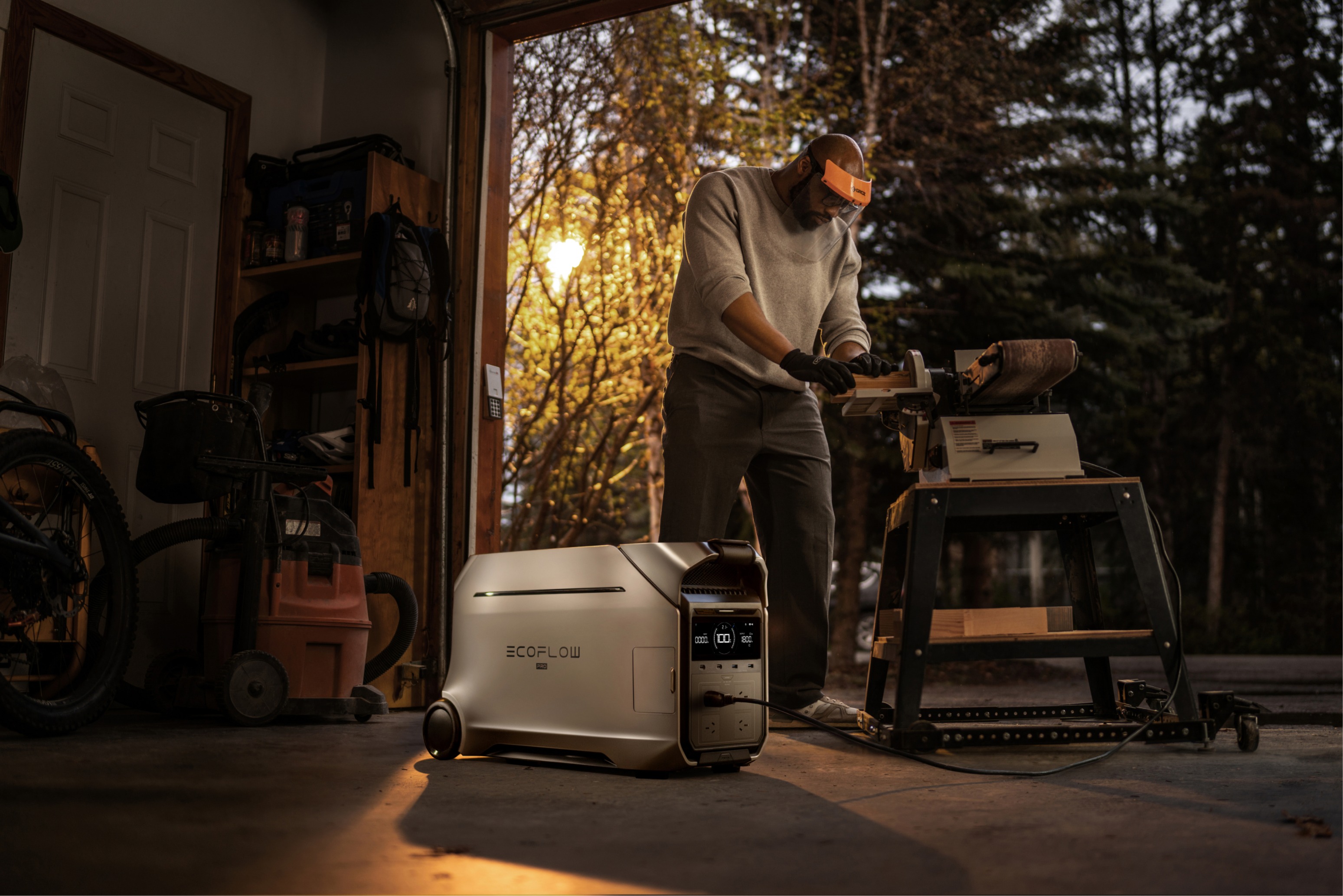A Comprehensive Guide to Safe Generator Use During Storms
A generator can save the day during a power outage, but it can also be deadly if you're not careful. Every year, people die from carbon monoxide poisoning because they ran their generator too close to the house or in the garage. Others get electrocuted or start fires. Most of these accidents happen to people who thought they knew what they were doing. The good news is that staying safe isn't hard—you just need to follow some basic rules. This guide covers what you need to know before, during, and after a storm to use your generator safely.
1. Get Your Generator Ready Before Storm Season
Long before the first storm warning, you need to prepare your generator setup. Having the right equipment and safety measures in place now will protect your family when the power goes out.
Calculate Your Power Needs and Choose the Right Generator
Add up the wattage of only your essential appliances. A refrigerator uses 600-800 watts, a sump pump needs about 1,300 watts, and a few lights add another 300-400 watts. Most families do fine with a 5,000-7,500 watt generator. Look for models with carbon monoxide shutoff sensors—they automatically shut down if CO levels get dangerous. For extension cords, buy heavy-duty, outdoor-rated ones with the right gauge: 12-gauge for most uses, 10-gauge for high-power appliances. Check cords before each use and throw out any with cuts, cracks, or worn insulation.
Install CO Alarms and Fire Extinguishers Now
Battery-operated carbon monoxide alarms belong on every level of your home, especially near bedrooms. Test them today and put in fresh batteries—don't wait until a storm is coming. Keep an ABC-rated fire extinguisher visible from where you'll run the generator. Teach everyone the PASS method: Pull the pin, Aim low, Squeeze the handle, Sweep side to side.
Hire an Electrician to Install a Transfer Switch
A transfer switch safely connects your generator to your home's electrical panel, eliminating the need for extension cords snaking through windows. Without one, people sometimes make deadly mistakes like plugging generators into wall outlets, which sends power backward into utility lines and can electrocute workers. Professional installation costs $500-$1,500 and takes 3-4 hours. Book your electrician now—they're impossible to reach once storm season starts.


2.Prevent Deadly Carbon Monoxide from Your Generator
Generator placement isn't just about convenience—it's about survival. Carbon monoxide from generators can seep into your home and kill your family while they sleep. Following these placement rules isn't optional.
Keep 20 Feet Away and Point Exhaust Outward
Place your generator at least 20 feet from your home—that's about the length of two cars. Point the exhaust away from all windows, doors, and vents, including your neighbors' homes. Check which way the wind typically blows in your yard and position the generator so the exhaust flows away from buildings. Even with proper placement, CO can drift with changing winds, which is why those indoor alarms are so critical.
Never Run It in These Locations
Never run a generator in your garage, even with the door wide open. CO is heavier than air and builds up quickly in enclosed spaces. Basements, sheds, and crawlspaces are equally deadly. Your screened porch or carport might seem safe because they're partially open, but they're still too close to living spaces and lack proper airflow. Every year, people die because they thought cracking a window or opening a door would provide enough ventilation. It doesn't.
Set It on Dry Ground Under a Canopy
Set up your generator on a flat, dry surface like a concrete pad or wooden platform. This keeps it stable and prevents water from pooling underneath. Since you can't run a generator in the rain (water and electricity don't mix), buy a purpose-built generator tent or canopy. These special covers allow proper ventilation while keeping rain off the unit. Don't rig up a plastic tarp—it can block airflow or melt onto hot engine parts, starting a fire.
3.Operate Your Generator When the Power Goes Out
Once the storm hits and your power fails, following the right procedures can prevent fires, electrocution, and equipment damage. These steps aren't just recommendations—skipping them can be fatal.
Turn Off, Cool Down, Then Refuel
Never add gas to a running generator. Turn it completely off first. The engine and muffler get hot enough to ignite gasoline vapors instantly, causing an explosion. Wait at least 10 minutes for cooling before you open the fuel cap. Use a funnel to avoid spills—gasoline on hot metal equals fire. Store extra fuel in approved containers in a locked shed or detached garage, never near the generator, water heater, or any other heat source. Keep fuel out of your house, basement, and attached garage where vapors can accumulate.
Connect Your Appliances the Right Way
If you have a transfer switch, follow your electrician's specific instructions—every installation is slightly different. For extension cord users: always start the generator before plugging anything in. Connect appliances directly to the generator's outlets; never plug your generator into a wall outlet, thinking you'll power the whole house. This backfeeding can kill utility workers. Don't try to run everything at once. Rotate between major appliances—run the refrigerator for a few hours, then switch to the water pump or AC unit. Overloading trip breakers at best and damaging your generator at worst.


4.Shut Down and Maintain Your Generator After the Storm
When power returns, resist the urge to immediately shut everything down and walk away. Proper shutdown and maintenance keep your generator ready for the next outage and prevent expensive repairs.
Shut Down in the Right Order
First, turn off and unplug every appliance connected to the generator. Then shut down the generator itself according to your manual—usually this means turning the fuel valve off, then the engine switch. Finally, disconnect all extension cords from the generator outlets. This sequence prevents electrical surges and makes your next startup smoother. Let the generator cool completely before moving it back to storage.
Store It Right to Keep It Working
For storage longer than 30 days, you have two choices: run the generator until the tank empties, or add fuel stabilizer to prevent the gas from breaking down and clogging your carburetor. Store the unit in a dry, secure spot like a shed or garage (never with fuel inside your house). Check your manual for maintenance schedules, but typically you'll change oil every 50-100 hours of use, clean the air filter monthly during heavy use, and replace spark plugs annually.
Monthly Test Runs Prevent Failure
Start your generator every month and let it run for 10-15 minutes with a small load connected. This circulates oil, charges the battery (if equipped), and ensures everything works before you need it. Mark your calendar for the same day each month. During the test, listen for unusual sounds and check for leaks. A generator that sits unused for months often won't start when you need it most.
Keep Your Family Safe During Storm Season!
Generators provide crucial backup power, but they must be used correctly. Always place your generator 20 feet from your home, never run it indoors or in your garage, and keep those CO alarms working. Let the engine cool before refueling and use a transfer switch or proper cords—never plug into wall outlets. If anyone feels dizzy or nauseous while the generator is running, get outside immediately and call 911. These rules aren't suggestions—they're the difference between weathering the storm safely and tragedy.
FAQs About Generator Use During Storms
Q1: Can I run my generator in the garage if I keep the door open?
A: No, never run a generator in your garage, even with the door wide open. Carbon monoxide is heavier than air and builds up quickly in enclosed spaces. Open doors and windows don't provide enough ventilation to prevent dangerous CO levels. People die every year thinking an open garage door makes it safe—it doesn't. Always keep your generator at least 20 feet from any building.
Q2: What size generator do I need for my house?
A: Calculate the wattage of your essential items only. A refrigerator needs 600-800 watts, a sump pump uses about 1,300 watts, and basic lights need 300-400 watts. Most families manage well with a 5,000-7,500 watt generator. Don't try to power your whole house—focus on necessities like keeping food cold, running the furnace fan, and having a few lights.
Q3: How long can I run my generator continuously?
A: Most portable generators can run 8-12 hours on a full tank, depending on the load. Never refuel while the generator is running or still hot. Plan to shut down every 8-10 hours for refueling and basic checks. Let it cool for at least 10 minutes before adding gas. Running a generator 24/7 will shorten its life—give it breaks when possible by rotating which appliances you power.
Q4: What should I do if my CO alarm goes off while using my generator?
A: Get everyone outside immediately—don't stop to open windows or turn off appliances. Call 911 from outside or a neighbor's house. Don't go back inside until emergency responders say it's safe. CO poisoning symptoms include headache, dizziness, weakness, and nausea. Even if you feel fine, let paramedics check everyone. Move your generator farther away and check that exhaust isn't drifting toward your home.
Q5: Do I really need a transfer switch, or can I just use extension cords?
A: While extension cords work for a few appliances, a transfer switch is safer and more convenient. It eliminates cords running through windows and powers hardwired items like your furnace, well pump, and built-in lights. Most importantly, it prevents backfeeding that can kill utility workers. The $500-1,500 investment pays for itself in safety and convenience, especially if you lose power frequently.